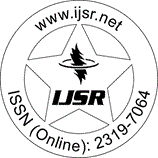Downloads: 7
India | Public Health Education | Volume 14 Issue 3, March 2025 | Pages: 700 - 706
Global Antibiotic Resistance Patterns in Clinical Isolates: Mechanisms, Implications, and Therapeutic Approaches
Abstract: Antibiotic resistance (AR) is an escalating global health crisis that undermines the efficacy of modern medicine, complicating infection treatment and increasing morbidity and mortality rates. This study critically examines global trends in AR, with a particular focus on key pathogens, including Escherichia coli, Staphylococcus aureus, Pseudomonas aeruginosa, Klebsiella pneumoniae, and Acinetobacter baumannii, which are responsible for healthcare - associated infections and are increasingly resistant to multiple antibiotic classes. The alarming rise in resistance to fluoroquinolones, carbapenems, and third - generation cephalosporins is driven by factors such as antibiotic misuse, weak regulations, and insufficient surveillance. The genetic adaptation of bacteria through mutation and horizontal gene transfer further exacerbates the spread of multidrug - resistant (MDR) and extensively drug - resistant (XDR) strains. Addressing this crisis necessitates a multi - faceted approach, including robust antibiotic stewardship programs, enhanced global surveillance, stringent infection control measures, and the development of alternative therapies such as bacteriophage therapy and novel antibiotics. Coordinated global efforts and innovative solutions are imperative to mitigating the AR threat and preserving antibiotic efficacy for future generations.
Keywords: efficacy, surveillance, exacerbates. Stringent, resistant
How to Cite?: Horice Butao, Bhawna Suryawanshi, "Global Antibiotic Resistance Patterns in Clinical Isolates: Mechanisms, Implications, and Therapeutic Approaches", Volume 14 Issue 3, March 2025, International Journal of Science and Research (IJSR), Pages: 700-706, https://www.ijsr.net/getabstract.php?paperid=SR25311204012, DOI: https://dx.doi.org/10.21275/SR25311204012
